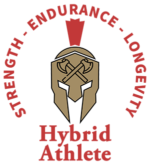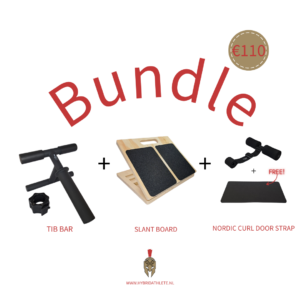
We talked about the importance of training your VMO, but now it’s time to tackle the king of VMO gains – the VMO squat. The VMO squat found its way from the Knees-Over-Toes community to virtually every athlete who values knee bulletproofing.
So, what’s the deal with this exercise, how do you distinguish it from a regular goblet squat, and how do you perform it to reap all the benefits? Let’s talk.
Table of Contents
The Vastus Medialis Oblique, AKA the VMO
The vastus medialis oblique, aka the VMO, is a part of the vastus medialis quadriceps head, shaped like a teardrop, right above the knee. This muscle originates from the upper parts of the femoral shaft and inserts above the patella (specifically into the quadriceps femoris tendon).
The role of the VMO is primarily knee stabilization during leg extension. So, whether it’s lifting or running, we can safely say that the VMO will be involved.
But, since it plays a crucial role in biomechanics that involve the knee joints, it essentially participates in all sorts of everyday activities.

What is the VMO Squat?
In short – the VMO squat is a squat variation that targets, well, the VMO specifically. To be fair, every type of squat will help with VMO activation thanks to its role in knee extension. However, the VMO squat is there specifically to strengthen the vastus medialis oblique, and by extension (pun intended) bulletproof the knee against future injuries.
In practical terms – the squats that target this specific region have one thing in common – the torso needs to stay upright throughout the movement so the load doesn’t shift to larger muscle groups. By doing this, you ensure that the VMO takes the load, and not the posterior chain or the other heads of the quadriceps.
How to do the VMO Goblet Squat
So, to perform a VMO squat (i.e. keep an upright torso) you need decent ankle dorsiflexion. But, if you lack ankle mobility, there’s no need to skip the exercise. You do it on a slant board or by standing on a pair of squat wedges.
If you can’t decide which one to get, check out our slant board vs. squat wedges quick guide.
When you elevate your heels, a few things happen. Firstly, you make up for the lack of ankle mobility. You also get to squat deeper without the risk of hurting your lower back. Lastly, the elevated heel position lets you shift the load to your VMO, all while allowing the knees to go over the toes.
So, here’s how you do the VMO squat:
- Stand on the slant board with the feet pointing down the slant
- Raise your arms (for balance) and keep them parallel to the floor
- Brace your core and descend into a deep squat. Try to close the angle between your hamstring and your calf
- Push through your feet and extend the knees to get back up
Any decent Knees-Over-Toes program will have VMO squats in it, albeit with a kettlebell. If you are new to this exercise, or squatting super-deep in general, start without the extra weight. But, as you slowly progress, use the kettlebell just like you would use it for goblet squats.
The Benefits of VMO Squats
Developing the vastus medialis oblique comes with a plethora of benefits:
- Squat deep without the extra strain on your lower back
- Effficiently target your VMO with high frequency without using heavy weights
- Bulletproof your knees, especially for movements that include explosive extension
- Develop a better knees-over-toes range of motion
What’s the difference between a slant board VMO squat and a goblet squat?
The real difference is subtle, but it’s still there. A VMO squat is done from a heel-elevated position to maximize VMO activation. A goblet squat can be done on a flat surface, which in turn activates larger muscle groups of the lower body (i.e. the hamstrings and glutes).
We can say that goblet squats are VMO squats if done on a slant board or by using the squat wedges to elevate the heels.
Start Developing Your VMO ASAP
Thanks to the low-load nature of the VMO squat, everyone can implement VMO squats into their leg days. And everyone should, honestly.
Get a decent elevated surface, and start thinking about the future of your knees. That is, if you want to be able to move pain-free well into your old age. And, let’s be real, the aesthetics of that teardrop VMO shape are a great bonus to all the benefits we talked about.
Get the best injury-prevention training equipment:
GET THE BEST INJURY-PREVENTION TRAINING EQUIPMENT:
Above all, a storyteller. Then comes marketing, branding, writing music, powerlifting, and woodworking.








1 thought on “VMO Squats – A Knee Bulletproofing Tool That Every Athlete Needs”
In it something is. Now all became clear, many thanks for the help in this question.